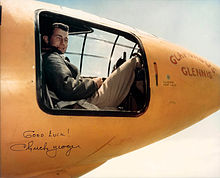Now, I am introducing a section with my normal Cold War posts called Cold War inventions - little segments where I mention inventions and discoveries made by the United States and USSR during the Cold War that were significant during the time period:
Bank-issued credit card: The first credits cards were cards like the Charga-Plate created in 1928 or the Air Travel Card of 1934 created by American Airlines and predate the Cold War. The cards were made with sheet metal and embossed with the customer's name, city, and state. However, none of these cards were issued or back by banks, only merchants. The first bank-issued credit card was created by John C. Biggins in 1946. It was utilized by Flatbush National Bank of Brooklyn and allowed any bill to be automatically paid by the bank with money from your bank account, allowing a cautious spender to not have to worry too much about paying off their credit card if they had enough in their account. It also allowed cards to finally be issued by an accredited final institution that can keep track of bills and charges from various merchants a person would have to pay off in the future.
Supersonic aircraft: The first manned plan to break the sound barrier was created by the United States. It was called the Bell X1 or Bell Model 44 , with the word 'Bell' coming from the Bell Aircraft Corporation that worked with the U.S. Army and U.S. Airforce and the National Advisory Committee for Aeronautics to bring this plane to fruition. Chuck Yeager was the pilot who was responsible for the first manned flight in the supersonic aircraft on October 1947, reaching Mach 1.05, though this feat was not announce to the public until June of 1948. With this new aircraft, the United States proved that having aircraft move faster than the speed of sound while keeping human occupants of the aircraft safe was possible. New variants of the Bell aircraft were created, including the X-1A and X-1C (or Bell Model 58C).

Yeager in Bell X-1 Cockpit, Wikimedia photo
Cable Television: John Walson Sr. was the man who is recognized by the United States Congress and the National Cable Television Association as the inventor of cable TV in 1948. John launch a system in Mahanoy City, Pennsylvania, a Appalachian town less than 100 miles away from Philadelphia and charged two dollars a month for this new service. Now instead of the over-the-air method used in previous forms of broadcasting, consumers could enjoy television delivered by coaxial cables and less interruptions in their programming.
nice article sir